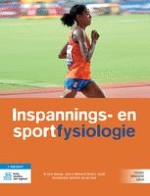2023 | OriginalPaper | Hoofdstuk
13. Beweegrichtlijnen - Het opstellen van bewegingsprogramma’s
Auteurs : Larry W. Kenney, Jack H. Wilmore, David L. Costill, Ramón Lindauer
Gepubliceerd in: Inspannings- en sportfysiologie
Uitgeverij: Bohn Stafleu van Loghum
Introductie
-
Slechts één op de drie kinderen is dagelijks fysiek actief.
-
Minder dan 5 % van de volwassenen is elke dag 30 minuten fysiek actief.
-
Slechts één op de drie volwassenen haalt elke week de aanbevolen hoeveelheid fysieke activiteit.
-
In de Verenigde Staten zijn er 80,2 miljoen mensen boven de 6 jaar fysiek inactief.
-
Slechts 35 % tot 44 % van de 75+’ers en 28 % tot 34 % van de 65- tot 74-jarigen is fysiek actief.
-
Meer dan 80 % van de adolescenten en volwassenen haalt niet de richtlijnen voor zowel aerobe als spierversterkende activiteiten.
-
Kinderen zitten méér dan 7,5 uur per dag voor tv-, video- of computerschermen.
-
Bijna één derde van de middelbare scholieren speelt gemiddeld ≥ 3 uur games per gemiddelde schooldag.
